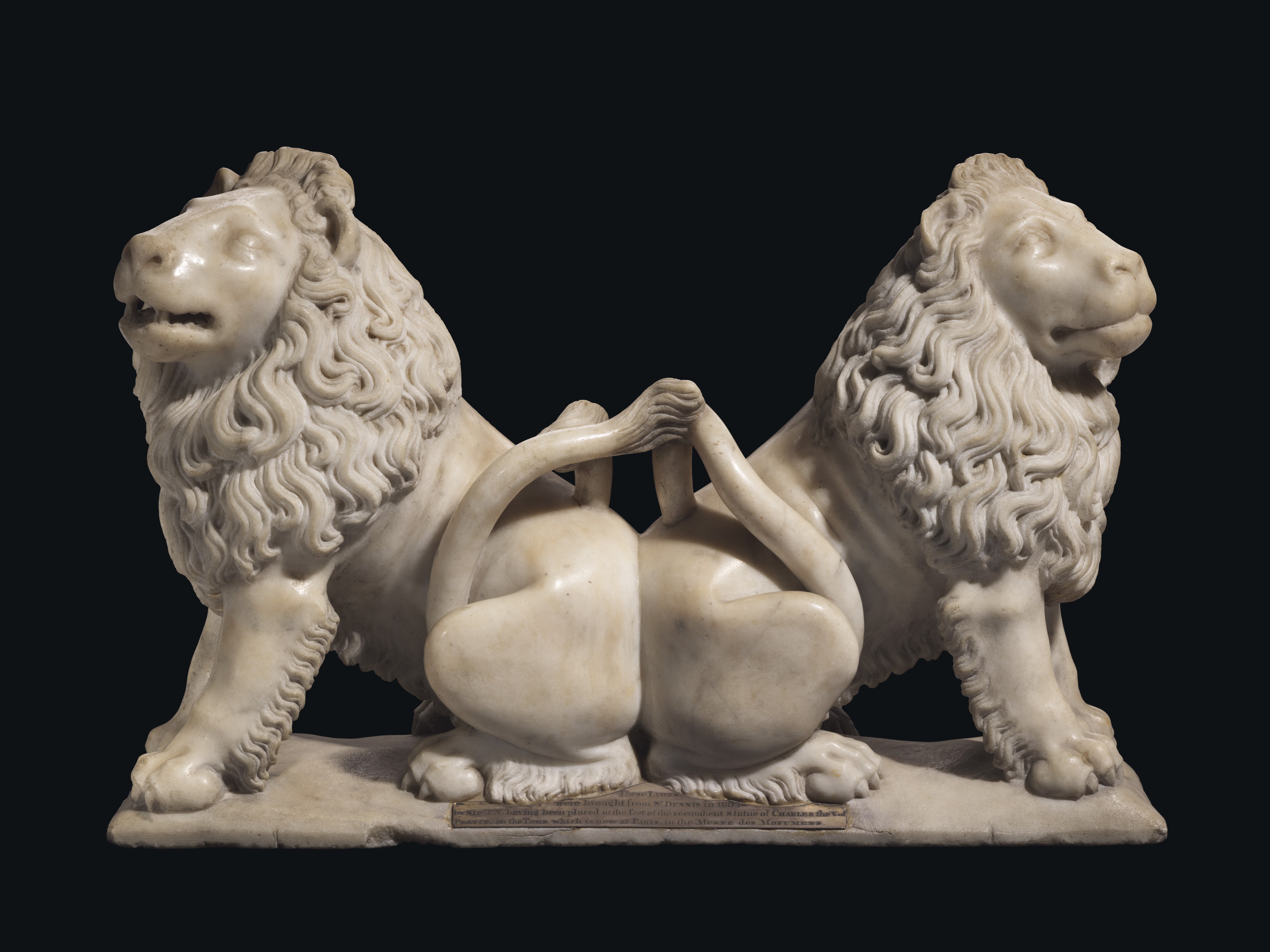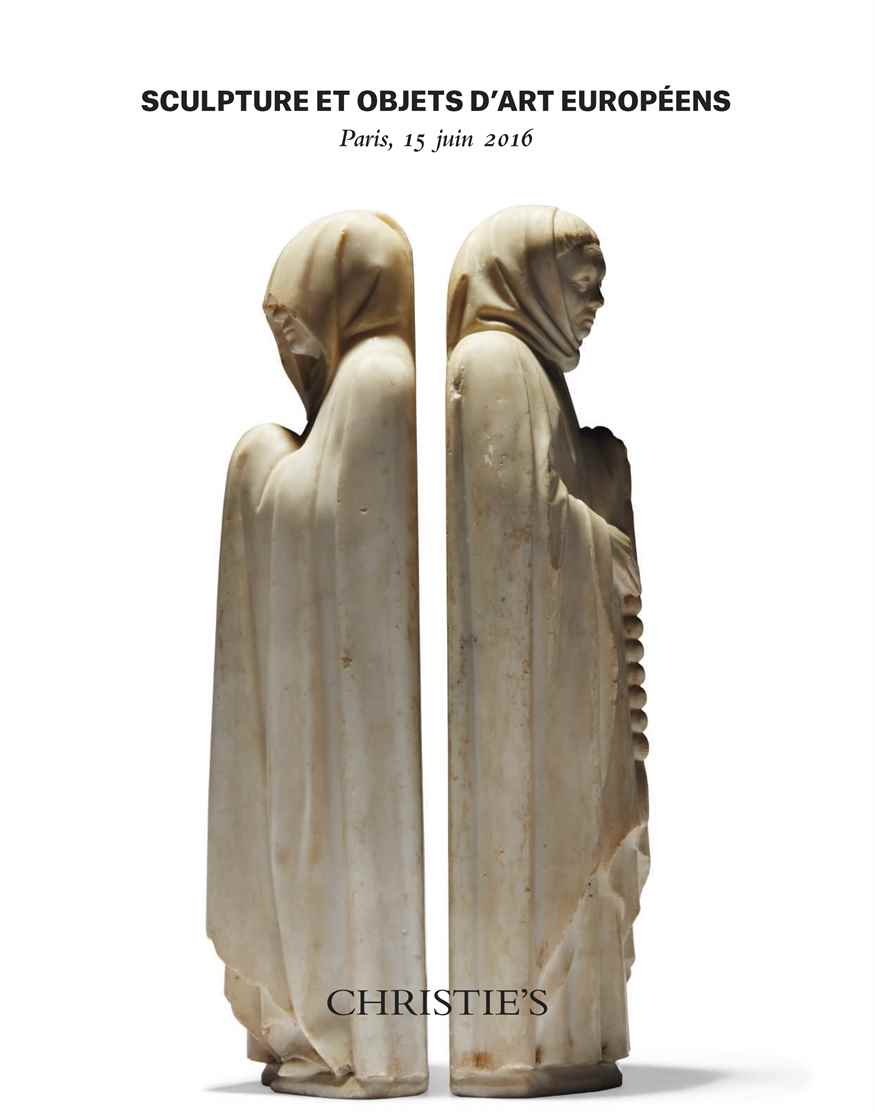Carved Marble Group of Two Addorsed Lions by André Beauneveu (circa 1335–1402), dating from 1364–66
This year, Christie’s Exceptional Sale will be led by a magnificent Carved Marble Group of Two Addorsed Lions by André Beauneveu (circa
1335–1402), dating from 1364–66. Originally executed to form part of
the tomb of King Charles V of France at the Abbey of St. Denis, they
were brought from France in 1802 by the English aristocrat Sir Thomas
Neave (1761–1848), and have remained in the same collection ever since.
Known to scholars only from an engraving of the 18th century,
the emergence of these lions represents a remarkable re-discovery.
Celebrating the art of medieval Europe, while simultaneously
representing technical brilliance, the lions’ superlative quality means
that they are worthy of any major museum or private collection.
Donald Johnston, Christie’s UK, International Head of Sculpture: ‘It
is extraordinarily rare to offer any medieval work of art with such a
fully documented provenance. The fact that this marble group was
executed by one of the most important sculptors of the period and is
part of an important royal commission makes it even more remarkable. The
discovery of these lions in a private English collection is wonderful
news for collectors and scholars who previously thought they had been
lost during the French Revolution.’
Documents
show that Beauneveu was commissioned by the young King Charles V
shortly after coming to the throne to execute four family tombs,
including the King’s own. One of the most important sculptors of late
medieval Europe, Beauneveu took two years to complete the task after
which he left the employ of the French crown, spending time in Flanders
and – possibly – England, before ending his career at the court of
Charles’s brother, Jean, duc de Berry. The tombs in Paris were
dismantled by the revolutionary government in 1793 and today only the
three male effigies survive. The effigy of Charles V, lacking the lions
which had rested at his feet, was restored to the Abbey of St. Denis,
Paris, where it remains today.
Thought to be the first royal effigy sculpted ad vivum,
the figure of Charles V has long been recognised as being superior to
the other two surviving figures, and scholars suggest it is the only one
entirely executed by Beauneveu’s own hand. The sensitivity of the
carving of the lions is notable and, like the effigy itself, they retain
a beautifully polished surface. It is likely that this was because the
archaeologist Alexandre Lenoir, who created a museum of French monuments
during the upheavals of the French Revolution, recognised the
superiority of the effigy of Charles V and removed it for inclusion in
the new museum.
It
is not known how the lions became separated from the main effigy but it
seems probable that they were part of the sales held to support
Lenoir’s museum. It is known that Sir Thomas Neave visited Paris in 1802
during the brief period in the Napoleonic Wars when Englishmen could
travel there, and that he purchased the lions at that time.
Other
examples of tomb figures recently sold by Christie’s include a pair of
alabaster and
a pair of marble Mourner figures from the tomb of Charles’s brother, Jean, Duc de Berry (the latter sold in Paris in 2016 for €5,025,500). The duke was also a great patron of the arts and his tomb, executed in two stages in the 15th century, was also vandalised at the time of the Revolution.
a pair of marble Mourner figures from the tomb of Charles’s brother, Jean, Duc de Berry (the latter sold in Paris in 2016 for €5,025,500). The duke was also a great patron of the arts and his tomb, executed in two stages in the 15th century, was also vandalised at the time of the Revolution.


No comments:
Post a Comment